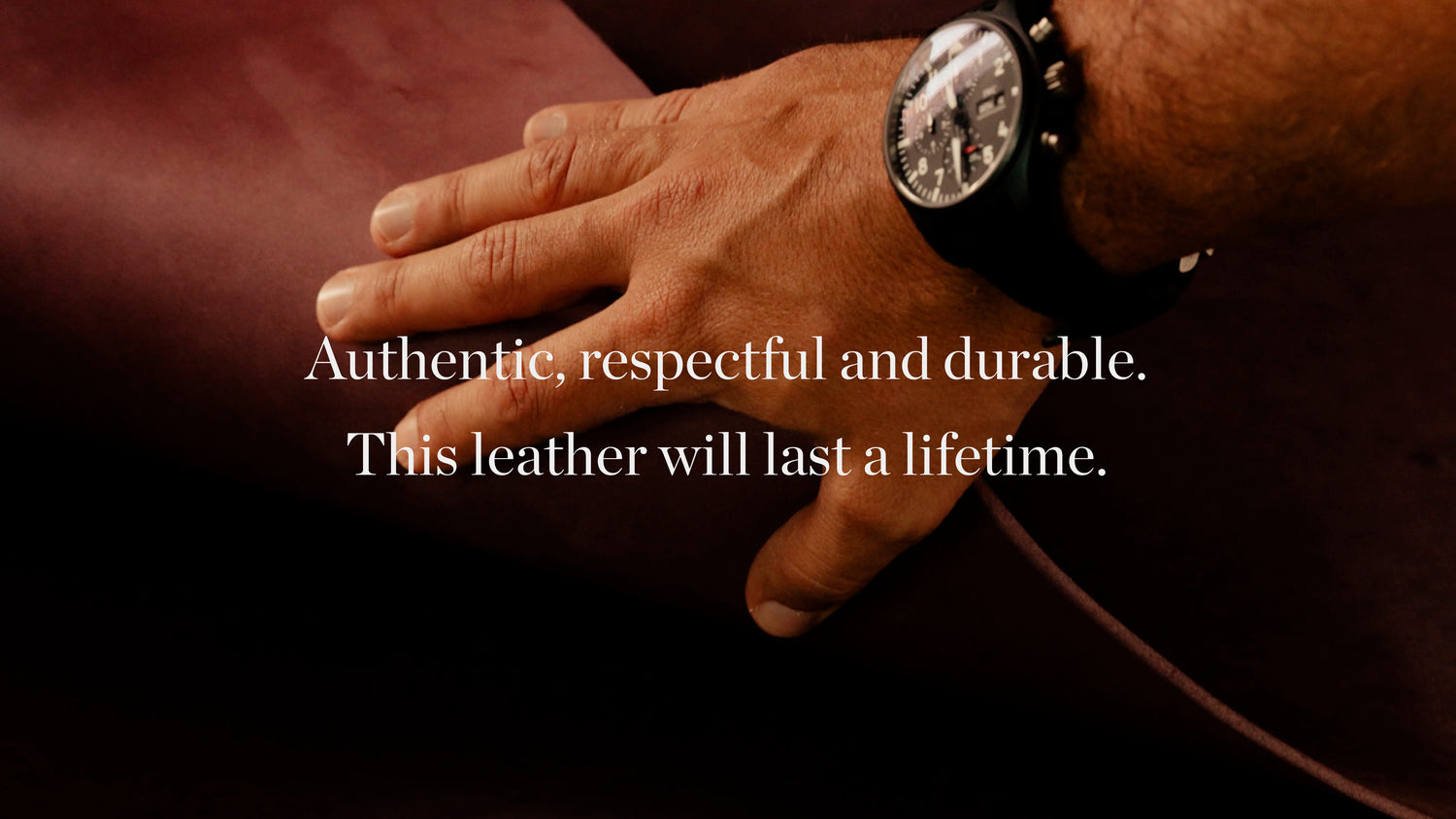OUR LEATHER
Our Specialty Leather comes exclusively from sustainable resources.
Following a rigorous selection process and only artisanal vegetable tanning methods, our leather is carefully sourced from certified sustainable providers who share our commitment to quality and the environment. Each piece is selected based on strict criteria, ensuring only the finest materials are used. The vegetable tanning process not only enhances the leather’s durability and unique character but also ensures it ages beautifully over time, developing a rich patina that tells its own story.
What is Vegetable-Tanned Leather?
Vegetable-tanned leather is an ancient method of leather processing that preserves the raw quality of the material without using harmful chemicals.
This eco-friendly approach, used by our ancestors, relies on natural materials like bark, leaves, and fruits. The result is a more sustainable leather compared to chemically tanned alternatives.
Discover below the steps of the vegetable tanning process.
Vegetable tanning
One of our secrets lies on the exquisite selection of tannin extracts from trees like Acacia, Quebracho or Mimosa.
Following the same liturgy as they have been doing it for hundreds of years, they place the leather, the tannins and the water into a giant wooden barrel which they keep spinning around for 3-4 weeks, which is the time needed to tan this type of leather.
Draining and drying
Once the leather is tanned, they remove it from the barrels and they press out the spare water.
When the leather is drained, they hang it in breeze dryers with wind currents generated by the mountain breeze. The drying phase ends after 5-7 days, depending on the existent weather.
Reducing thickness
In this process the leather gets divided and reduced in terms of thickness with a really sharp blade. Precision is key, as this careful refinement allows the leather to be worked into a variety of products, ensuring a smooth, flawless finish.
Conditioners & Waxes
One of the last processes consists in giving protection and durability to the leather.
With a mixture of olive oil and beeswax made by our artisans, they create a layer on the leather to protect it and to improve its condition.
Polish
Depending on the type of finish chosen for each leather, they will use one technique or another.
One of the most special processes is to get a final shine polished, obtained by rubbing a special piece of round glass on the leather.
Our Leather. Your Story.


Why choose vegetable tanned leather?
Choosing vegetable-tanned leather means opting for a healthier, more sustainable material for both you and the environment.
Unlike chrome tanning and other chemical processes, vegetable tanning uses natural tannins from trees and plants, avoiding the toxic residues and pollution associated with chemical treatments. Chrome-tanned leather, besides being harmful to the environment, can cause skin irritations and often deteriorates quickly, losing its natural look.
Vegetable-tanned leather, however, ages beautifully, developing a unique patina and becoming even more attractive over time. It’s a conscious choice that prioritizes durability, protects the planet, and celebrates true craftsmanship.








